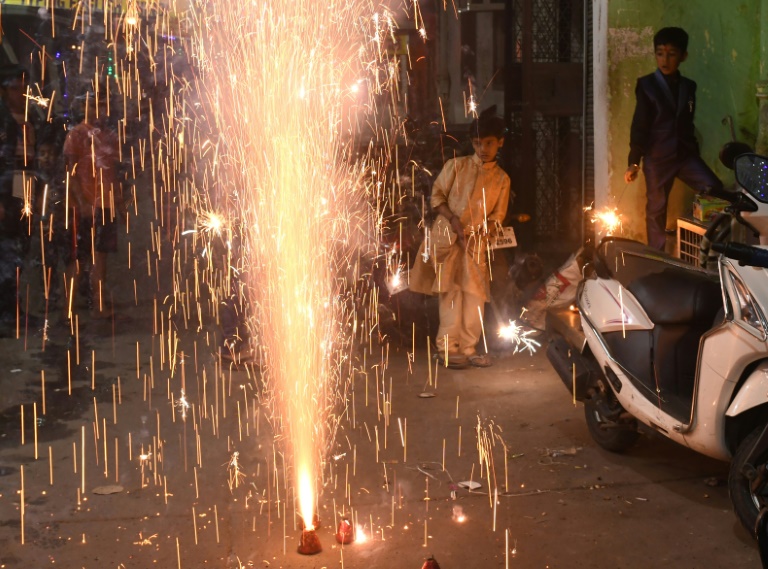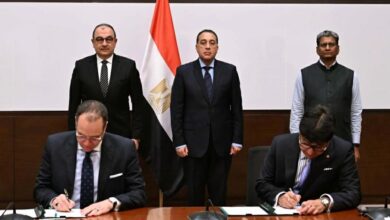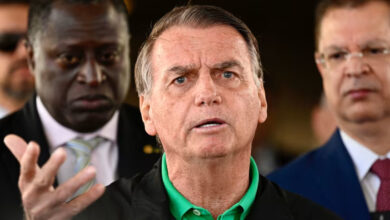
Air pollution in New Delhi hit hazardous levels Thursday after a night of free-for-all Diwali fireworks, despite Supreme Court efforts to curb the smog-fueling partying.
Major monuments including the India Gate and Red Fort were hidden by a toxic haze. Commuters donned masks as visibility on major roads was reduced to barely 50 meters (160 feet).
Diwali is the biggest Hindu festival of the year, when firecrackers are traditionally let off.
Ambient air quality in what the World Health Organization has said is the world’s most polluted major city touched 595 on Thursday morning, according to the US embassy in Delhi which independently monitors pollution levels.
Any reading over 300 is considered hazardous and a danger even to healthy people.
India’s Supreme Court ruled last month that only environmentally friendly fireworks — that emit less smoke and soot — can be sold in Delhi, in a bid to cut the smog that has scarred the city’s international reputation.
The court also said firecrackers could only be set off between 8:00 pm and 10:00 pm.
But the capital’s 20 million residents turned a deaf ear to the ruling. Crackers and rockets reverberated around city neighborhoods well after midnight.
– Diwali nightmare –
“For a few moments of enjoyment people are willing to endanger the planet. It is insane,” Pranav Yadav, a 19-year-old student wearing a pollution mask told AFP.
“I expected people to show some concern but at this rate it won’t be long till every child in Delhi has a respiratory disease,” added Yadav as he headed for a metro train.
Delhi police had vowed to punish violators of the Supreme Court order but could not immediately say whether charges had been made.
“Local police stations have registered several complaints, we are trying to collect all the information,” Delhi police spokesman Anil Mittal told AFP.
Delhi’s air quality typically worsens in winter, due to pollution from the burning of rice stubble, diesel engines, coal-fired power plants and industrial emissions.
Levels of PM2.5 — fine particles linked to higher rates of chronic bronchitis, lung cancer and heart disease — have soared since last month when farmers in Punjab and other nearby states started to burn crop residue.
The US embassy air quality index is a combined measure of poisonous gases and fine airborne particles. Once the foul air crosses 500, it causes serious aggravation of heart and lung diseases, with doctors advising residents to skip outdoor activity.
– Diwali nightmare –
Mustafa Mohammed, a student and cycling enthusiast, said he could feel the air quality dip drastically as he set out on Thursday to the India Gate in the heart of the city.
“I regularly cycle around here and what I can (see) today the pollution has really gone up after Diwali,” he said.
Sunil Dahiya, a senior campaigner with Greenpeace India, said religious fervor was one of the reasons why people still let off fireworks despite mounting health concerns.
“They also think the pollution is high all the year round so one day of festivities is not going to make much of a difference,” he said.
Dahiya called for long-term solutions and mass awareness campaigns instead of focusing only on a few days in the year.
In 2016, Diwali festivities in Delhi raised pollution levels to their highest in nearly two decades — forcing the closure of schools and other emergency measures.
Last month the WHO said exposure to toxic air indoors and out kills some 600,000 children under the age of 15 each year.




